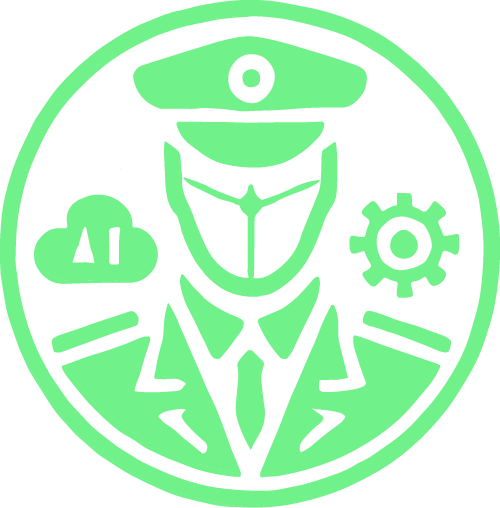Pt7 – Robotics and AI: Automation in Action
Introduction
The convergence of robotics and artificial intelligence (AI) is driving significant advancements in automation, transforming industries and enhancing productivity. AI-powered robots can perform complex tasks with precision, efficiency, and adaptability, leading to revolutionary changes in sectors ranging from manufacturing to healthcare. This post delves into the integration of robotics and AI, exploring critical applications, technological advancements, and the future potential of this powerful combination.
The Basics of Robotics and AI
Robotics involves the design, construction, and operation of robots—machines capable of carrying out tasks autonomously or semi-autonomously. AI, particularly machine learning and deep learning endows robots with the ability to learn from data, make decisions, and adapt to changing environments. Together, they form a symbiotic relationship in which AI enhances the capabilities of robots, making them more intelligent and versatile.
Critical Applications of Robotics and AI
- Manufacturing
- Assembly Line Automation: AI-driven robots on assembly lines can perform tasks such as welding, painting, and assembling parts with high precision and consistency. These robots operate 24/7 without fatigue, significantly boosting productivity and reducing errors.
- Quality Control: AI-powered vision systems inspect products for defects and inconsistencies, ensuring high-quality standards. These systems can identify minute flaws that human inspectors might miss.
- Predictive Maintenance: Robots equipped with AI analyse data from machinery to predict potential failures and schedule maintenance proactively, minimising downtime and reducing maintenance costs.
- Healthcare
- Surgical Robots: AI-driven surgical robots assist surgeons in performing delicate procedures with enhanced precision and control. These robots reduce the risk of human error and improve patient outcomes.
- Rehabilitation: Robotic exoskeletons and prosthetics powered by AI help patients regain movement and improve their quality of life. These devices adapt to the user’s movements, providing personalised support.
- Patient Care: Robots in healthcare settings assist with tasks such as medication delivery, patient monitoring, and hygiene management. AI enables these robots to interact with patients and provide real-time feedback to healthcare providers.
- Logistics and Warehousing
- Autonomous Mobile Robots (AMRs): AI-driven AMRs navigate warehouse environments autonomously, transporting goods, sorting packages, and managing inventory. These robots optimise routes and workflows, increasing efficiency.
- Drones: AI-powered drones are used for inventory management, surveillance, and delivery services. They can access hard-to-reach areas, perform aerial surveys, and deliver packages quickly and efficiently.
- Agriculture
- Autonomous Tractors and Harvesters: AI-enabled agricultural robots perform tasks such as planting, weeding, and harvesting with high precision. These robots reduce labour costs and increase crop yields.
- Crop Monitoring: Drones and AI-equipped ground-based robots analyse soil conditions, monitor crop health, and detect pest infestations. This data helps farmers make informed decisions and optimise farming practices.
- Defence and Security
- Surveillance Robots: AI-powered robots and drones are used for surveillance and reconnaissance missions, providing real-time intelligence and situational awareness. These systems can detect threats and assist in security operations.
- Explosive Ordnance Disposal (EOD): AI-equipped robots handle hazardous materials and disarm explosives, protecting human lives in dangerous situations.
Technological Advancements in Robotics and AI
- Computer Vision: Advances in computer vision enable robots to perceive and interpret their surroundings and recognise objects, faces, and gestures. This capability is crucial for navigation, inspection, and human-robot interaction tasks.
- Natural Language Processing (NLP): NLP allows robots to understand and respond to human language, enabling more natural and intuitive interactions. Voice-activated assistants and chatbots are examples of NLP in action.
- Reinforcement Learning: This type of machine learning involves training robots to make decisions through trial and error and receiving rewards for successful actions. It is used in applications such as autonomous driving and robotic manipulation.
- Sensor Integration: Modern robots are equipped with various sensors, including cameras, LIDAR, and tactile sensors. These sensors provide real-time data that AI algorithms use to make decisions and adapt to changing conditions.
Future Potential of Robotics and AI
The future of robotics and AI holds exciting possibilities, with ongoing research and development driving new advancements:
- Collaborative Robots (Cobots): Cobots are designed to work alongside humans, assisting with tasks that require a combination of human dexterity and robotic precision. These robots enhance productivity and improve workplace safety.
- Smart Factories: Integrating AI and robotics in manufacturing will lead to the development of smart factories, where interconnected machines and systems optimise production processes, reduce waste, and improve quality.
- Service Robots: AI-driven robots will increasingly be used in service industries such as hospitality, retail, and healthcare, providing personalised services and improving customer experiences.
- Space Exploration: AI-powered robots will play a crucial role in space exploration, performing tasks such as assembling structures, conducting scientific experiments, and exploring distant planets.
Challenges and Considerations
While the integration of robotics and AI offers numerous benefits, it also presents challenges and ethical considerations:
- Job Displacement: Robotics and AI can automate tasks, leading to job displacement in certain industries. Considering the social and economic impacts and implementing workforce reskilling and transition strategies is essential.
- Ethical Concerns: The use of AI in decision-making processes raises ethical questions, such as bias, accountability, and transparency. Ensuring that AI-driven robots operate ethically and responsibly is crucial.
- Security: As robots become more interconnected and autonomous, protecting against cyber threats is essential. Robust cybersecurity measures are necessary to protect against hacking and unauthorised access.
- Regulation: The rapid advancement of robotics and AI requires the development of rules and standards to ensure safety, interoperability, and ethical use. Policymakers must work closely with industry experts to create a balanced regulatory framework.
Conclusion
Integrating robotics and AI transforms industries by enhancing automation, improving efficiency, and enabling new applications. As technology advances, the potential for robotics and AI to drive innovation and enhance quality of life is immense. By addressing the challenges and ethical considerations, we can ensure that the benefits of this powerful combination are realised for the betterment of society.
